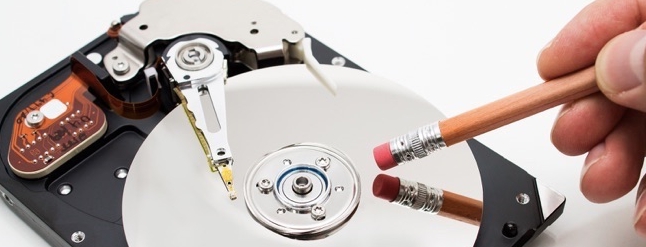HJL,
Technically, short of physically destroying flash media, there is no way to insure that something is securely erased. This applies to USB drives, SD cards of all sizes, and even SSD disk drives. It applies less so to magnetic hard drives.
Hard drives can drift so there can be a thin shadow of old data, but that is something only someone with very deep pockets can recover, and it would be hit and miss.
With flash drives, data is eventually erased, but what normally happens is the prior place the data was stored is mapped as “obsolete, erase when you need space”, while the new data is written to a new, freshly erased area. It can be a long time until the algorithm (or something like a “trim” or “secure erase” command, though not all devices have that) really erases the old data. Until actually erased, the flash chips can contain the original data where it can be accessed either with “diagnostic” commands or simply removing the chip and accessing it directly.
This doesn’t apply if the drive is encrypted before any data is written, but encrypting after writing will run into the same problem where the unencrytped data might still be in areas marked unused but not erased.
See:
SSD Data Wiping: Sanitize or Secure Erase SSDs?, and
Flash drives dangerously hard to purge of sensitive data
HJL Comments: For those of a more visual nature, this video from ExplainingComputers states it very well. SSD’s can only write to the same location a few thousand times (usually). If they were used in the same fashion that normal hard drives are used, they wouldn’t last long at all. Manufacturers extend their service life by spreading the writes out across the entire available space since there is no access time penalty like there is in a normal hard drive. While this makes their service life tolerable, it also makes it incredibly difficult to securely erase old data. You have to either write to every possible memory location or depend upon the manufacturer to reliably erase the data with a specific instruction. Do you trust them?











This comment is in regards to James’ book about the formation of a Christian nation in Ireland, I think. I had another idea, that may sound bonkers now, but may make sense later on. South Africa. Think on it.
For anyone interested in testing their own digital security, I will leave this link
https://distrowatch.com/search.php?ostype=Linux&category=Forensics&origin=All&basedon=All¬basedon=None&desktop=All&architecture=All&package=All&rolling=All&isosize=All&netinstall=All&language=All&status=Active#simple
learn how to use the tools, build a small computer lab and test yourself. You don’t need to spend a lot of money to build a lab (I once used an old DELL pentium 3 equipped pc as my attack computer).
I accidentally deleted dozens of pictures due to a flaw in Windows that highlights the wrong folder. I’ve tried a program called Undelete, but no results. As these were of New York 2 months after 9/11 I would love to have recover them.